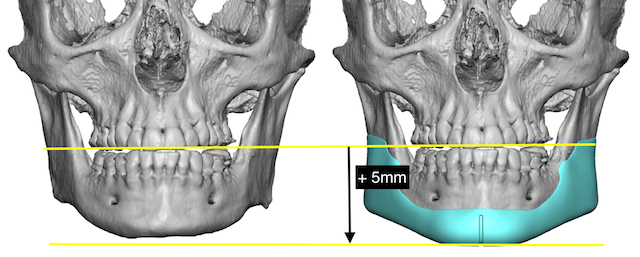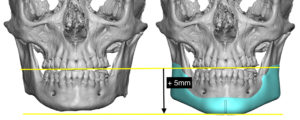Background: Proportions are one measurable assessment of facial attractiveness and are an important preoperative assessment in aesthetic facial reshaping surgery. One proportionate assessment is that of the facial thirds, specifically that of the horizontal thirds. Measured by upper third (hairline to glabella), middle third (glabella to subnasale) and lower third (subnasale to menton), these should ideally be equal in the measured vertical lengths between them. Another facial length proportionate assessment is that of the Golden Ratio relationship between the lateral canthus to stomion of 1.6 to 1.0 between stomion to menton or the hairline to lateral ala of 1.6 to lateral ala to menton of 1.0.
Patients with a vertical lower facial deficiency will easily be detected by a facial third assessment. But they have clinical findings that make the diagnosis without having to do such specific measurements. The chin will simply look inadequate in height between the lower lip and the bottom of the chin. The labiomental fold may be deep if an existing overbite exists which is not uncommon in the vertically short lower jaw. The jawline can be indistinct without a well defined inferior border and they may have a flat or near flat mandibular plane angle.
Short of orthognathic surgery the only two ways to vertically lengthen the lower jaw is the chin wing osteotomy and a custom jawline implant. The most complete method to lengthen the whole jawline from the jaw angle to the chin is the custom jawline implant. While the chin wing osteotomy has the advantage of being an autologous procedure, it leaves the jaw angle area largely unlengthened by where the horizontal osteotomy line ends. It also has the disadvantage of not being able to provide any width in the jaw angle area.
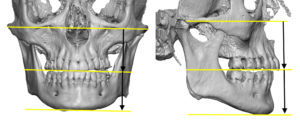
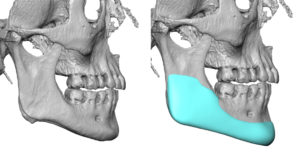
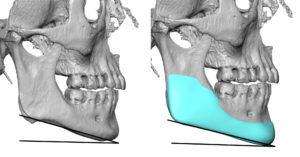



Case Highlights:
1) Vertical deficiencies of the lower face are usually caused by a lower jaw that has inadequate height from angle to chin.
2) Opening the bite to demonstrate the external desired vertical lengthening of the lower jaw establishes an interocclusal measurement for a custom jawline implant design.
3) The custom jawline implant design must have flanges that go up along the sides of the lower jaw for support and positioning.
Dr. Barry Eppley
Indianapolis, Indiana

